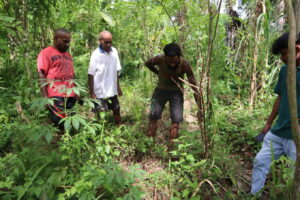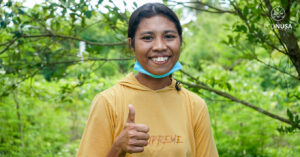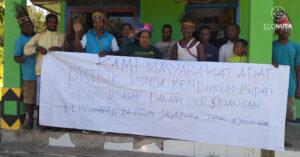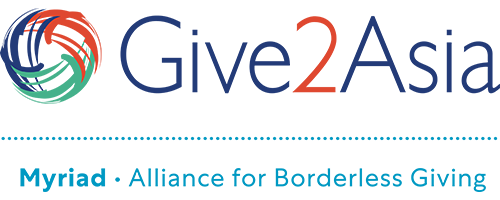
The cultural diversity of the Land of Papua is unquestionable. Ranging from tribes, customs, and languages. When discussing the local language of Papua, it is closely related to the mother tongue (native language). A number of scientific studies explain that Papuan mother tongue is related to relations between humans and the environment.
As the changes and the development of the times, also the number of new arrivals from outside who enter the Land of Papua is a threat to the existence of the mother tongue of the tribes who inhabit Papua. The development of the modern world is slowly beginning to erode cultural identity, including language that has begun to be abandoned by young people. Some regional languages in Papua are reported to be endangered, one of them is Marori.
Geographically, Marori is a small tribe and native language within the large Marind Anim family (= Marind people) who inhabit Wasur Village, Merauke Regency, Papua. The book explains that the Marind tribe (the Marind tribe living south of the lower part of the Digul river, east of Yos Sudarso Island) referred to the Marori people as Manggat or Manggat-rik, but at present the term is not very popular.
In the official website of The Endangered Languages Project, the number of native Marori speakers is currently around 150 people, but the findings in the field through the research of La Hisa, Agustinus Mahuze, and I Wayan Arka (2018) in the book “Ethnobotany, Local Knowledge of Marori in the Park National Wasur Merauke “, shows that there are only 20 active speakers.
In line with the explanation in the book, I Ngurah Suryawan’s scientific research, Department of Anthropology (2017), Faculty of Literature and Culture, University of Papua (UNIPA) published in the journal Society and Culture, Volume 19 No. 3 (2017), also explains that the Marori people are currently faced with socio-cultural changes.
I Ngurah Suryawan explained that the phenomenon of socio-cultural change was inevitable, and now hit people and village areas that used to live on the local philosophical basis of human relations and ecology. According to Ngurah, gradually the philosophical foundation was confronted with challenges from the influence of modernity stemming from various factors such as strong migration flows, companies that dredge natural wealth, and cultural acculturation that slowly entered.
The life of the Marori people was initially as gatherers, that is, living traditionally and collecting natural products to meet the needs of life. Ancestral heritage in the form of traditional systems and knowledge can still be found today.
In addition to traditions and belief systems, the Marori people have local knowledge passed on through their mother tongue, one of which is knowledge about the benefits of plants (ethnobotany). Ethnobotany is one of the disciplines of the branch of biology that examines how indigenous tribes (humans) use plants for food, shelter, and clothing (Young, 2007).
In simple ethnobotany can be interpreted as a study of the relationship between humans or certain ethnic groups with the world of plants in their environment. The focus of ethnobotany studies includes the use of plants as a source of food, traditional medicines, producing dyes, producing fiber, craft or woven materials, traditional rituals and firewood.
In the context of the use of plants, the Marori people have quite good knowledge in recognizing the physical form of the land and the characteristics of vegetation, which is expressed in local language terms. They can identify typical plants found in certain environments.
For example, the mention of dense forest in the Marori language. Sourced from the book “Ethnobotany, Local Knowledge of the Marori Tribe in the Wasur Merauke National Park”, the Marori call the dense forest the name “deg”, which is predominantly planted with plants such as the Syzygium branderhorstii, Mangifera gedebe, Ptychosperm macarthurii, Ficus spp. and Endiandra sp.
The annual marshes are called ‘purferi’ and are widely grown by vegetation such as Metroxylon sago, Nauclea orientalis, Livistona humilis, Semecarpus australiensis, Voacanga grandifolia, Antidesma ghaesembilla, Trichospermum sp., Curcuma spp., Kaempferia galanga and Zombing. And many other local terms.
At present the Marori people almost completely abandon their mother tongue and turn to Indonesian as the most dominant language. Even more unfortunate is that the Marori language is not passed down to the next generation.
Based on the research of La Hisa et al in the book, explaining that the erosion of mother or local language would threaten the existence of the ethnobotany knowledge of the Marori tribe whose inheritance is only through language. Answering these challenges requires a concrete strategy and initiative so that the Marori mother tongue and the values of environmental knowledge, as well as the management of natural resources will not become extinct over time.
One initiative that can be carried out is through efforts to document local languages and the values of knowledge of the Marori, especially documentation of languages related to their environment. Efforts to document language and local knowledge are capital for the next generation in dealing with social change.







